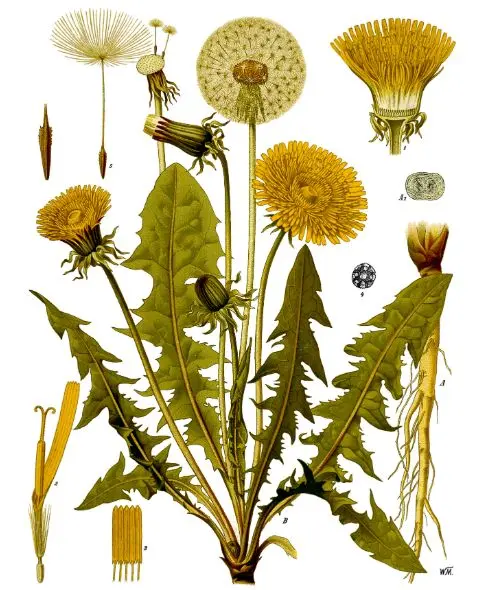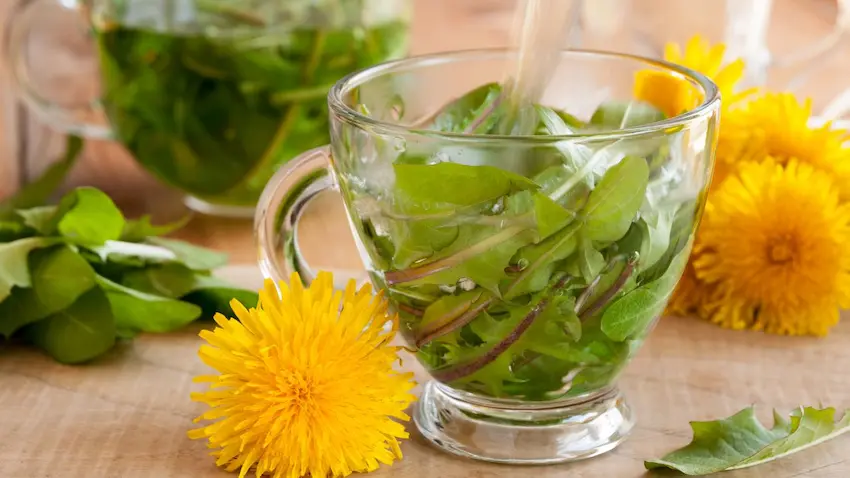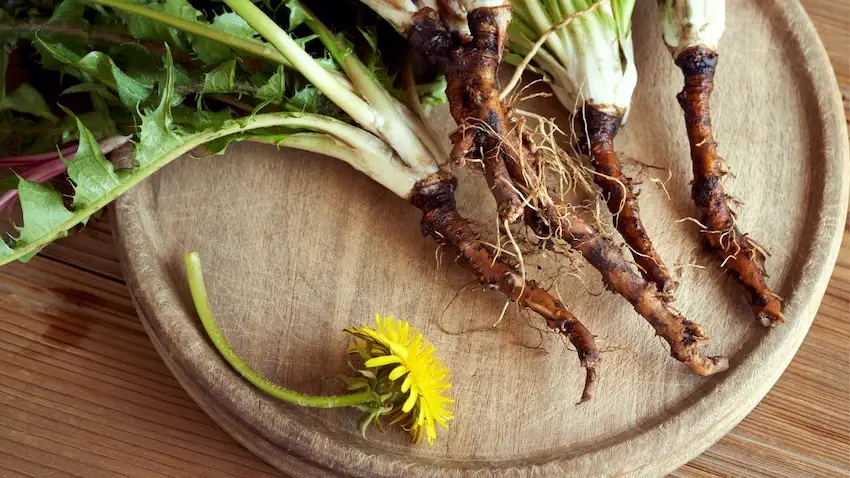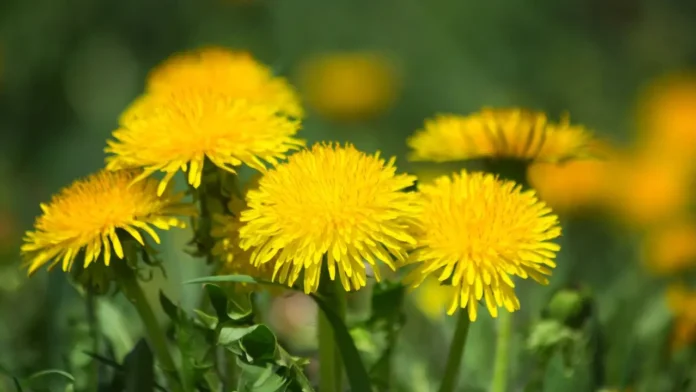The Dandelion (Taraxacum officinale), a perennial herbaceous plant hailing from the Asteraceae family, boasts a highly developed root system. From this emerges a rosette of large, coarsely serrated leaves, elongated and broader at the top, lacking a stem.
Emanating from the rosette’s core, a leafless flower stalk ascends, reaching heights of up to 30 cm. This cylindrical, hollow, unbranched stalk is crowned with a golden-yellow, capitulum bloom, often comprising multiple flowers.
When the petals of the flower fall away, what remains are seeds adorned with a feathery parachute, reminiscent of a translucent globe, effortlessly dispersed by the wind. This affords the Dandelion an incredible capacity for reproduction and germination, often in the least expected locations. The plant is bitter, laden with milky sap that oozes at the slightest touch. Far from being poisonous, the entire plant is not only edible but also highly medicinal. The spindle-shaped, cylindrical root is fairly thick and around 20 cm long, white on the inside, and a dark brown exterior, filled with milky sap.

Taxonomy
| Kingdom: | Plantae |
| Order: | Asterales |
| Family: | Asteraceae |
| Genus: | Taraxacum |
| Species: | Taraxacum officinale |
Leontodon taraxacum L.
Other names: Blowball, Common Dandelion…
Blooming period
| I | II | III | IV | V | VI |
| VII | VIII | IX | X | XI | XII |
What does dandelion contain?
Iron, sodium, phosphorus, potassium, silicic acid, saponin, bitter heterosides: taraxacin, taraxacerin, choline, essential oil, resin, fatty acids, inulin, sugar, enzymes, phytosterol, inosit, terpene alcohols taraxasterol and beta-amyrin, proteins, and wax.
When is the best time to pick dandelion?
The dandelion plant flourishes from spring through to fall, with its root, leaves, and flowers being gathered for their medicinal virtues. The root, laden with bitter, milky sap, is ideally harvested in the twilight of summer and dawn of autumn to attain its peak medicinal prowess, ensuring a robust and succulent interior. Prior to the plant’s flowering stage, the leaves are collected, and to prepare syrup, the flowers are harvested at the height of their bloom. As a common weed, the dandelion thrives in moist meadows, verdant lawns, pastures, hillside terrains, promenades, and within the confines of gardens.
What does dandelion do to your body?
Owing to its inherent bitterness, the Dandelion amplifies both appetite and digestion. In instances of dyspepsia or intestinal atony, it serves as a gentle laxative, as well as a diuretic. It can be used as a tea, extract, or in coffee form.
In early spring, it serves as a cleansing blood salad, promoting urination and alleviating the pains associated with gallbladder and liver diseases. Fresh dandelion juice can enhance the condition of even the most gravely ill patients.
Fresh dandelion juice is employed against diseases of the liver, kidneys, spleen, and urinary bladder. It combats hemorrhoids, febrile conditions, anemia, insomnia, headaches, rashes, ulcers, constipation, and for delayed and irregular menstruation.
Dandelion promotes the flow of bile from an inflamed liver, assists in the expulsion of gravel and stones from the gallbladder, and by stimulating urination, removes all toxic substances and toxins from the body.
It cleanses the mucous membranes of the lungs, stomach, and intestines. The Dandelion possesses many healing properties, and to learn how to best utilize them, continue reading…
Dandelion as a remedy – Preparation, application, and effects
Fresh dandelion juice
Partake in a bountiful tablespoon of freshly extracted dandelion juice four times daily over a period of four weeks. Alternatively, amalgamate two substantial tablespoons of fresh juice with 250 ml of goat’s milk, infuse with a teaspoon of honey, and imbibe on an empty stomach at the break of day.
In the event of goat’s milk scarcity, cow’s milk may function as an apt replacement. Leisurely relishing a cup throughout the day could elevate the condition of even the gravely unwell. This regimen is recommended for individuals grappling with ailments of the liver, kidney, spleen, and bladder, along with jaundice, hemorrhoids, fever, anemia, rheumatism, and headaches.
Dandelion Salad
Proformuliši ovaj tekst pazeći da ne dolazi do pasivnog glasa kao i da rečenica ne prelazi 20 riječi. This salad creates, dilutes, cleanses, and improves blood, and is a remedy for exudative pleurisy, edema, and scurvy.
Dandelion Leaf Tea
Steep 10 grams of dried dandelion leaves in 2.5 dl of water for at least 12 hours, add one large spoonful of honey, and boil for 5 minutes to make a versatile dandelion tea. Drink a small cup in the morning on an empty stomach, and sip the rest throughout the day.

Moreover, dandelion tea can enhance the functionality of bronchial glands and the thyroid, ameliorate age-related debility, and ease diabetes when consumed warm, in a demitasse, both morning and evening.
Similarly, dandelion leaves, once their tough ends have been removed, can be utilized as a green vegetable much like spinach. For preparation, boil the leaves in the evening, allow them to steep in the water overnight, and proceed with cooking the following morning.
Dandelion Tincture
In April, as dandelions begin to blossom, thinly slice the root and arrange it in a two-liter wide-mouthed jar. Introduce strong alcohol in a 1:10 ratio, and allow it to steep in a warm location for six weeks, stirring intermittently.
Subsequently, strain the concoction and ingest a small cup on an empty stomach, half an hour prior to lunch and dinner, for a duration of four weeks. This tincture functions as a remedy for discomfort in the chest, stomach, and intestines. To complement the tea blend for urinary retention, the following dried herb mixture can also be employed:
- 10 g blackthorn (Prunus spinosa)
- 10 g buckthorn (Rhamnus frangula)
- 10 g centaury (Erythraea centaurium)
- 15 g yarrow (Achillea millefolium)
- 15 g ground ivy (Glechoma hederacea)
This prepared tincture is an excellent agent for promoting bowel movements and cleansing the blood.
Dandelion milk helps with metal poisoning.
Take two to three teaspoons daily for three to four weeks. To treat the eyes, add two to three drops of the sap from the flower stem once or twice a week. Combine the sap with alcohol in equal parts for use as a tincture, taking three to six drops three times a day.
Dandelion for gallstones

A tea mixture of the following herbs is effective for treating gallstones:
- 40 g – dandelion root
- 40 g – chicory (Cichoriumintybus)
- 20 g – peppermint (Mentha piperita)
Pour three tablespoons of the tea mixture into half a liter of boiling water, cover and let it steep for about two hours. Drink one large tablespoon every two hours. A tea blend composed of the subsequent components aids in the removal of gallstones:
- 100 g fresh dandelion juice
- 20 g 90% alcohol
- 15 g glycerin
- 15 g water
Take one to two tablespoons daily after meals. If fresh juice is not available, a water extract of the root is good, taking one to a maximum of five grams (one teaspoon) per day.
Dandelion for Urinary Retention.
A tea blend containing the following herbs is recommended for the best results in treating urinary retention:
- 30 g. of dandelion
- 30 g. of horsetail (Equisetum arvense)
- 30 g. of Hemiaria glabra
- 10 g. of corn silk (Stigmata maydis)
To concoct the tea, incorporate three generous tablespoons of the blend into half a liter of boiling water, cover, and allow it to infuse for approximately two hours before straining. Consume one cup every four hours, commencing after breakfast in the morning and ensuring the final cup is taken at least two hours prior to retiring for the evening.
